Showing 1-20 of 29 results

Food-Grade Grains 101: Online Training
Three simple, click-through modules provide the basics of getting seed in the ground to harvesting and marketing food-grade grains.

Resources and Case Studies for Implementing Prairie Strips Across the Midwest
Compared to other Conservation Reserve Program practices, prairie strips (CP43) offer many advantages. Prairie strips can be placed both within fields and along their edges. Planting 10% of fields to prairie strips can reduce sediment and nutrient loss. The practice is flexible, with the option of driving on strips when needed for farm operations. And […]
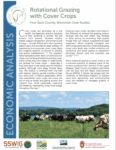
Rotational Grazing with Cover Crops Case Studies
Since rotational grazing of cover crops is not a common practice, to address some of the current questions from farmers in the upper Midwest, the Sand County Foundation of Wisconsin partnered with the Sauk Soil and Water Improvement Group and the University of Wisconsin-Madison to explore short-term agronomic and environmental costs and benefits of managed […]

Kernza Disease Guide Cards
As a perennial grain crop, intermediate wheatgrass (Thinopyrum intermedium, marketed under the trade name Kernza in reference to the grain) offers an economic opportunity to growers who are interested in improving the environmental condition of their farmland. Despite this opportunity, there is a possibility that perennial crops can harbor pathogen populations that increase over time. Although […]
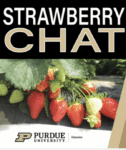
Strawberry Chat Podcast
Strawberry Chat is a virtual discussion about strawberry production at small and diversified farms in Indiana and neighboring states. The hosts, Wenjing Guan and Miranda Purcell of Purdue University, invite guests to discuss activities that happen at the time of the year and cover different production systems. URL: https://anchor.fm/strawberrychat
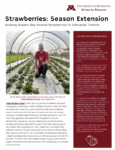
Strawberries: Season Extension
This University of Minnesota publication shares the experiences of two farmer who tried growing day neutral strawberries in high tunnels using a table top system. It shares their experiences in the areas of production, yield and marketing, with a budget analysis. The farmers are Todd and Tracy Linbo, of Double T Acres, and Aaron Wills, […]
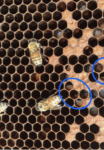
Diagnostic Tools for Honey Bee Diseases
Diagnostic Tools for Honey Bee Diseases is an interactive website designed to train beekeepers and veterinarians in honey bee medicine. It includes photos of honey bee diseases and clear instructions for known diagnostic methods for honey bee disease. Lessons include step by step instructions, common mistakes and even fun games to solidify learning objectives. This […]
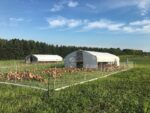
Innovative Sliding Electric Fence System for Pastured Poultry
With 3,000+ pasture-raised laying hens, Michael Gutschenritter from Three Brothers Farm in Wisconsin needed a solution that saved time and energy. Enter the HenPen, a sliding fence system with an integrated feeder that gets the job done faster with less physical strain.

Beekeeping in Northern Climates Manual and Guidebook
The "Beekeeping in Northern Climates" Manual and Workbook are companion resources created by the University of Minnesota's Bee Lab to help beekeepers understand and apply region-specific best practices. Beekeeping in Northern Climates Manual The third edition of Beekeeping in Northern Climates is a manual from the University of Minnesota Bee Lab for both new and experienced beekeepers […]
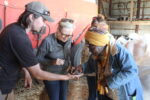
The New Growers’ Guide to Producing Organic Food-Grade Grains in The Upper Midwest
This guide is intended for farmers interested in adding food-grade grains to their rotations, whether they are new to farming, or interested in incorporating these grains into an existing commodity grain, diversified vegetable, or livestock operation.
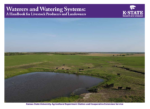
Livestock Waterers and Watering Systems
This handbook assists in the design of a watering system that fits your budget, site, and livestock needs.

Cultivating Morel Mushrooms
One of the more iconic and recognizable mushrooms, morels are famed for their distinctive appearance and their exquisite taste. This fungus is characterized by its unique 'pitted and ridged' cap, as well as its earthy and nutty flavor. Morels have been recorded on all continents except Antarctica, thus with its widespread nature it comes to […]
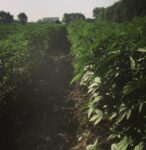
Midwestern Hemp Database
The Midwestern Hemp Database (MHD) is an interactive tool that houses all of the research done by the Midwestern Hemp Research Collaborative (MHRC)
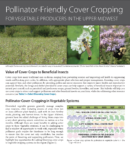
Pollinator-Friendly Cover Cropping for Vegetable Producers in the Upper Midwest
Growers are increasingly interested in adding cover crops to rotations to improve soil health, break disease cycles, and provide ecosystem services. In addition to these benefits, cover crops present an opportunity to add crucial floral resources and habitat for pollinators and other beneficial insects on the farm. However, identifying appropriate cover crop species and management […]

The Fruit and Nut Compass
The Fruit and Nut Compass is a farm business planning tool to help both new and experienced producers project the financial costs and returns from an enterprise focused on perennial crops.

Livestock Management with Drones Video Series
With support from SARE, Pigeon River Farm developed a video series and additional resources sharing tips and tricks for how they use drones in their day-to-day livestock management.

Iowa Meat Processors’ Resource Guidebook
A guide to building, upgrading or expanding a small meat processing facility in Iowa.
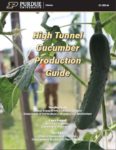
High Tunnel Cucumber Production Guide
This cucumber production guide provides resources and recommendations tailored to the distinctive growing environment of high tunnels.

Goat Milk Soap Making Manual
This 38-page manual was created to be used in Goat Milk Soap Making workshops and as a tool for producers interested in making goat milk soap. It was developed by Krista Duval of Creekside Farms in 2017, as part of a SARE-supported project to amplify specialty dairy opportunities for local producers and food entrepreneurs in Appalachia Ohio.

Sustainable Agriculture Learning Modules for High School Agriculture
Established with the aid of a NCR-SARE Professional Development grant, these Sustainable Agriculture Learning Modules from the University of Nebraska-Lincoln were created to offer insight into what sustainability within agriculture actually looks like.